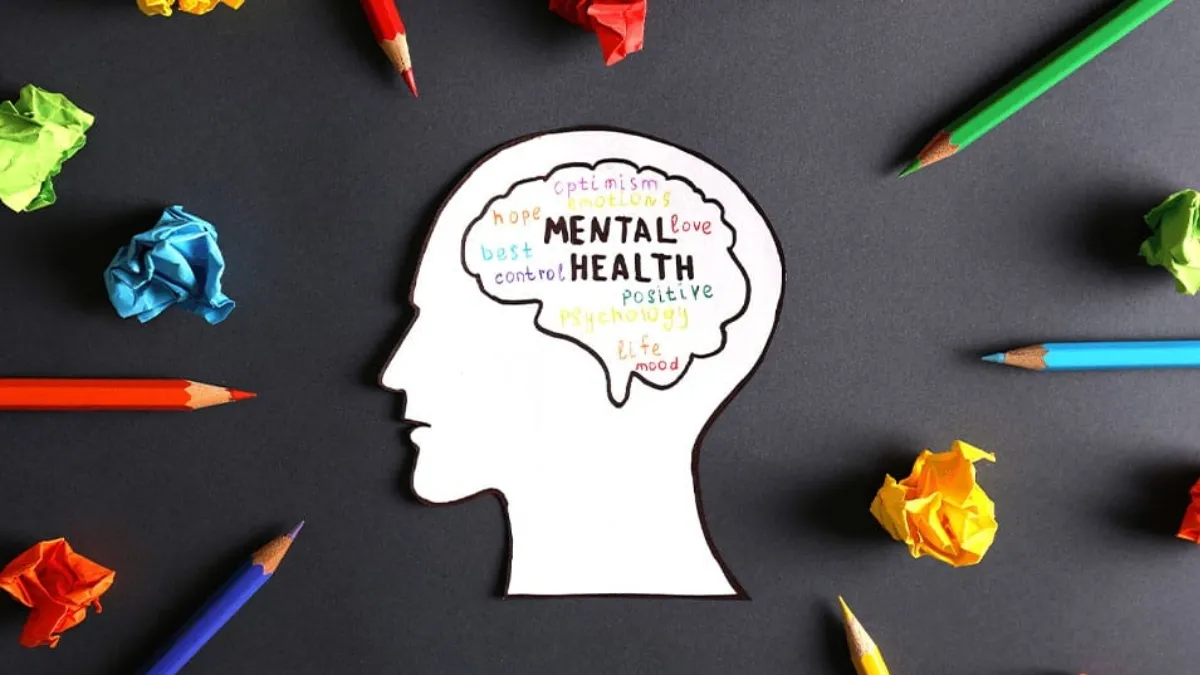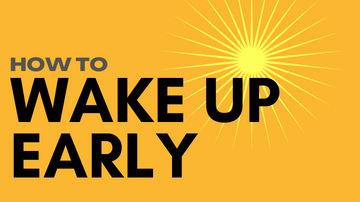Daily Life
Routine Planning for People with ADHD

Understanding the Importance of Routine for People with ADHD
For individuals with ADHD, routines aren’t just helpful—they’re essential. ADHD, or Attention Deficit Hyperactivity Disorder, often brings challenges such as distractibility, impulsivity, difficulty starting tasks, and problems with time management. Without structure, these traits can lead to chaos, missed deadlines, disorganized living spaces, and emotional burnout. That’s where a routine comes in. While the idea of sticking to a rigid schedule may seem overwhelming or even impossible at first, creating a flexible and ADHD-friendly routine can actually reduce stress, improve focus, and help manage day-to-day responsibilities more smoothly. Routines don’t need to be strict or perfect to work—they just need to be consistent, repeatable, and tailored to fit your natural energy rhythms and cognitive needs.
Start Small and Keep It Simple
One of the biggest mistakes people with ADHD make when trying to build a routine is overcomplicating it from the start. Creating an elaborate schedule that spans your entire day with tight time blocks can lead to feelings of failure when things don’t go perfectly. Instead, begin with one or two anchors—perhaps a consistent morning routine or a predictable bedtime. These anchors can act as stabilizing points that bring some predictability to your day. Once you’re comfortable with those, gradually layer on more tasks. The key is to keep it simple and achievable. For example, instead of scheduling “clean the house,” start with “put laundry in the basket after breakfast.” Tiny wins like these help build momentum, create confidence, and reduce overwhelm.
Use Visual Cues and Reminders
Because ADHD brains often struggle with working memory and time blindness, visual cues and reminders are incredibly effective tools for routine planning. Wall calendars, sticky notes, dry-erase boards, visual checklists, and color-coded planners can all serve as external supports that remind you what to do and when. You might find that a visual morning checklist taped to your mirror or a “start work” alarm on your phone each day at the same time helps transition you from task to task. You can also use apps like Todoist, Notion, or Trello for digital reminders, but many people with ADHD benefit more from physical, visible tools that are in plain sight. These external systems act as memory aids and time managers, reducing the mental load required to stay on track.
Build in Buffer Time Between Tasks
People with ADHD often underestimate how long things take or forget to factor in transitions between tasks, which leads to running late or skipping parts of their routine altogether. To address this, build buffer time into your schedule. If you plan to start working at 10:00 a.m. after breakfast, don’t schedule something else that ends right at 9:59 a.m.—give yourself at least 10 to 15 minutes to transition mentally and physically. Adding space between tasks gives you time to refocus, move at your own pace, and avoid the stress of rushing. These buffers are also helpful for when your attention drifts or unexpected distractions arise, which is common with ADHD. A little breathing room can make your entire routine feel more manageable and less pressured.
Embrace Routines That Work with Your Energy Levels
ADHD can cause fluctuations in energy and motivation throughout the day. Trying to fight against these natural waves often leads to frustration. Instead, build your routine around your energy patterns. If you feel most alert and creative in the morning, schedule focused work or challenging tasks during that window. Save low-energy tasks like organizing your desk, answering emails, or doing laundry for the afternoon slump. Routines don’t need to start at 5:00 a.m. or follow a traditional work schedule to be effective—they need to suit you. Tracking your energy levels for a few days can help identify your natural rhythms and allow you to build a routine that aligns with how your brain functions best.
Use Time Blocking with Flexible Boundaries
Time blocking is a powerful routine-building method for people with ADHD, as it reduces decision fatigue and adds structure to your day. However, it’s important to use flexible blocks, not rigid hourly schedules that create pressure or guilt when plans shift. For example, divide your day into broader sections like “Morning Routine (7–9 a.m.),” “Work Focus (9–12 p.m.),” “Admin Tasks (1–3 p.m.),” and “Evening Wind Down (7–9 p.m.).” This format offers predictability without being overly strict. Time blocking also helps prevent hyperfocus—when someone with ADHD gets so deeply absorbed in a task that they lose track of time and neglect other responsibilities. Setting alarms or using timers can gently pull your attention back when it’s time to transition.
Make Room for Movement and Sensory Breaks
Physical movement is not just beneficial—it’s crucial for ADHD brains. It helps release restlessness, improves dopamine production, and boosts concentration. Incorporate movement breaks into your routine throughout the day, even if it’s just a few minutes of stretching, walking, or dancing around your room. Sensory breaks can also be helpful: listening to music, playing with a fidget toy, or stepping outside to feel the sun on your face can reset your nervous system and improve emotional regulation. These breaks are not indulgent—they’re essential self-care practices that keep your brain running optimally. Schedule them into your day as intentionally as any other task to make them part of your sustainable routine.
Use Accountability and External Structure
Many people with ADHD find that internal motivation alone isn’t enough to stick to routines, especially on difficult or low-energy days. That’s where accountability comes in. Whether it’s a daily check-in with a friend, a co-working session on Zoom, a text reminder from a partner, or even working alongside others at a café, adding a layer of external structure can increase follow-through. Accountability doesn’t mean relying on others to do things for you—it’s about setting up systems that remind you, encourage you, or nudge you into action when your executive function is lagging. Some find that body doubling—a technique where you do tasks in the presence of someone else—works wonders. You don’t even have to interact, just having someone nearby can help maintain focus and routine.
Practice Compassion and Flexibility
No routine will ever be perfect—especially not for someone with ADHD. Some days will go smoothly, while others will feel like everything has fallen apart. That’s okay. Routine is not about rigidly forcing yourself to perform like a machine; it’s about giving your life rhythm, reducing chaos, and creating a sense of safety and self-trust. Practicing self-compassion when routines slip helps you bounce back faster. Instead of beating yourself up over a missed task, ask what got in the way and gently adjust. Celebrate small wins—whether you stuck to your morning routine, completed a difficult task, or simply remembered to take a break. ADHD thrives on positive reinforcement, and acknowledging progress helps build habits more effectively than punishment ever will.
Daily Life
10-Minute Morning Routine for Busy People

10-Minute Morning Routine for Busy People
In the fast-paced world we live in, finding time for an elaborate morning routine can seem like a luxury reserved for the few. But even if your mornings are packed with responsibilities, meetings, or family obligations, a 10-minute morning routine can still be powerful and transformative. The goal is not to cram everything into those few minutes, but to establish a focused sequence of habits that help you ground yourself, enhance mental clarity, and start the day with purpose. A well-structured 10-minute morning routine doesn’t require waking up at 5 a.m. or performing a dozen self-care rituals — it’s about making intentional choices that support your well-being, even in a short amount of time.
Start with Deep Breathing and Grounding (1 Minute)
The first minute of your day should not involve checking your phone or rushing to your inbox. Instead, begin with one minute of mindful breathing. As you wake up, sit up in bed or stand near a window, and inhale deeply through your nose for four seconds, hold for four, and exhale slowly for six. This controlled breathing helps regulate your nervous system, calms your thoughts, and transitions your brain from sleep mode to alert awareness. This simple grounding exercise doesn’t just relax your mind — it signals your body to wake up gently and intentionally. Starting the day in a centered state sets a much better tone than diving into distractions or stress.
Hydrate Immediately (1 Minute)
After hours of sleep, your body is dehydrated. Drinking a glass of water as soon as you wake up rehydrates your cells, jumpstarts your metabolism, and boosts cognitive function. This minute-long habit may seem minor, but it’s essential. Adding a squeeze of lemon or a pinch of sea salt can increase the hydration benefits and support digestion. Avoid reaching for coffee before drinking water — hydration first ensures you’re nourishing your body, not stressing it. This quick act tells your brain that your health matters, even if time is limited.
Quick Movement to Wake the Body (2 Minutes)
You don’t need a full workout in the morning, but just two minutes of movement can increase blood flow, reduce stiffness, and improve mood. A short series of stretches, jumping jacks, push-ups, or sun salutations can energize your body without requiring any equipment. This movement doesn’t just wake your muscles — it also releases endorphins that can shift your mindset from groggy to motivated. Think of it as a physical reset button that shakes off sleep and brings you into an active state of readiness for the day ahead.
Mental Clarity with a Mini To-Do Review (3 Minutes)
Take three minutes to get clear on what needs to happen today. You don’t have to write a full planner spread — just identify your top three priorities. This could be as simple as writing them down on a sticky note or saying them out loud. Focus on tasks that are important rather than just urgent. By doing this, you avoid feeling scattered or reactive, and you step into the day with a clear intention. When your mind knows what matters most, it becomes easier to navigate distractions and make better decisions. This habit also reduces overwhelm, because it frames your day in a way that feels manageable and purposeful.
Positive Affirmations or Gratitude Reflection (2 Minutes)
Your mindset in the morning often dictates the energy you carry throughout the day. Spend two minutes practicing positive affirmations or reflecting on gratitude. You can say something like, “I am capable of handling whatever comes my way today,” or “Today is a fresh start, and I choose positivity.” If affirmations feel awkward, simply think of three things you’re grateful for — no matter how small. Practicing gratitude shifts your focus from what’s lacking to what’s already working in your life. It helps you tap into a sense of abundance, resilience, and peace before diving into external pressures.
Optional Bonus: Silence or Nature Exposure (1 Minute)
If you have a balcony, a window with sunlight, or even access to fresh air, step outside or sit quietly for one more minute. Allow yourself to just exist without doing anything. Let your thoughts settle. This single minute of silence or nature exposure helps you reconnect with the world outside your phone or obligations. It reminds you that before the meetings, errands, and chaos, you are a human being who deserves stillness. This micro-moment of peace can feel incredibly nourishing, especially if your day is non-stop.
The Secret to Making It Work: Consistency and Simplicity
The effectiveness of a 10-minute routine doesn’t depend on how much you do — it’s about how consistently you do it. The goal isn’t perfection but repetition. When you design a short, manageable morning routine that you can actually stick to, you build momentum and discipline without burning out. Over time, this small investment in yourself will yield big returns in your productivity, emotional stability, and physical wellness. Simplicity is your best ally here. Don’t overthink it — just commit to showing up for 10 intentional minutes every morning. That’s enough to create a positive ripple effect throughout your entire day.
Conclusion: A Morning Routine for Real Life
Busy schedules and demanding lifestyles don’t have to mean sacrificing self-care or mental clarity. A 10-minute morning routine offers a practical, realistic way to ground yourself before the whirlwind begins. By focusing on breathing, hydration, movement, mental clarity, and positive intention, you can turn even the most hectic mornings into an opportunity for self-alignment and strength. It’s not about how early you wake up or how much you squeeze in — it’s about starting your day with presence, purpose, and self-respect. When you make time for yourself first, you move through the rest of the day with more energy, resilience, and calm.
Daily Life
Why You Should Never Skip Making Your Bed

Why You Should Never Skip Making Your Bed
Making your bed each morning might seem like an insignificant task, something easily brushed off in the hustle of daily life. Yet, this small act has a surprisingly profound impact on your mindset, productivity, and overall well-being. It’s more than just a neat appearance — it’s a habit that sets the tone for your entire day. From psychological benefits to cleanliness and discipline, making your bed is a foundational ritual that can support your goals and bring a sense of order into an otherwise chaotic world. In a time when we’re constantly seeking efficiency and mental clarity, this five-minute routine is one of the easiest ways to begin your day with intention.
A Simple Act That Starts a Chain Reaction
One of the most powerful reasons to make your bed in the morning is the domino effect it has on the rest of your day. Accomplishing this first small task gives you a quick win — it sends a message to your brain that you are organized, capable, and in control. This initial success sets a positive momentum, making you more likely to complete other tasks and follow through with your intentions throughout the day. Psychologists often refer to this as the “keystone habit” — a behavior that can trigger widespread change in other areas of life. When you make your bed, you’re not just tidying up your room — you’re also priming your mind for discipline, responsibility, and achievement.
A Clean Environment Supports a Clear Mind
Your surroundings have a direct impact on your mental state. Walking into a room with a rumpled, unmade bed can subconsciously contribute to feelings of disorder and stress, especially if your day has already been demanding. On the other hand, a neatly made bed instantly brings a sense of calm and cleanliness to your space. It visually signals that your home — and by extension, your life — is in order. This is especially important if you work from home or spend a lot of time in your bedroom. By starting the day with a clean slate, you give yourself the mental clarity needed to make better decisions and stay focused, productive, and emotionally balanced.
Making the Bed Strengthens Discipline and Routine
Discipline is built through consistent action, and making your bed is a low-barrier activity that reinforces self-discipline every single morning. Even on days when you feel tired, unmotivated, or overwhelmed, pushing yourself to complete this one task is an exercise in resilience. Over time, this small act becomes a symbol of your commitment to order, habit-building, and personal growth. It teaches you that even when things feel out of control, there is always something you can do to bring structure back into your day. This sense of discipline can spill over into more challenging areas of your life, such as fitness, career goals, or financial planning.
It Improves Sleep Hygiene and Nighttime Routine
Making your bed in the morning directly contributes to a better nighttime routine. A neatly made bed feels more inviting at the end of the day, signaling to your brain that it’s time to rest and recover. Climbing into a clean, organized sleeping space can actually improve your sleep quality and make it easier to wind down. Your brain forms associations with your environment, so if your bed looks chaotic, your mind may struggle to relax. On the contrary, returning to a well-made bed helps create a sleep-conducive environment that promotes comfort, peace, and better rest. It may seem minor, but this habit supports a full cycle of good sleep hygiene — from how your day starts to how it ends.
It Teaches Attention to Detail and Personal Pride
Taking a few extra minutes to smooth the sheets and fluff the pillows may not change the world, but it does develop an eye for detail. In a world filled with distractions and shortcuts, attention to the little things can make a big difference in your personal and professional life. By making your bed neatly, you’re training yourself to care about how things are done, not just whether they get done. This habit instills a quiet sense of pride — it’s a reminder that you value yourself enough to maintain your space, even if no one else will see it. That personal pride becomes a foundation for how you carry yourself throughout the day, how you treat others, and how you approach responsibilities, no matter how big or small.
It’s a Moment of Mindfulness in a Rushed World
In our fast-paced routines, it’s easy to feel like the day begins the moment you grab your phone or rush out the door. Making your bed offers a moment of pause and presence — a simple opportunity to be mindful. You can treat it as a meditative practice, focusing on each fold and tuck, the coolness of the sheets, and the comfort of the space you’re creating. This act can help you anchor your morning in calm awareness before external demands take over. Mindfulness doesn’t always require ten minutes of deep breathing; sometimes it’s found in the intention behind the most ordinary routines — like making your bed.
It’s Backed by Science and Endorsed by Experts
The habit of making your bed isn’t just anecdotal advice — it’s been championed by military leaders, motivational speakers, psychologists, and lifestyle experts alike. Admiral William H. McRaven famously declared in a commencement speech that if you want to change the world, start by making your bed. His point was that success starts with discipline and attention to the small things. Research also shows that people who make their beds report feeling more productive and better about their day. Surveys have indicated that regular bed-makers are more likely to report satisfaction with their jobs, home life, and sleep quality compared to those who leave it undone.
Conclusion: Small Habit, Big Impact
While it might be tempting to rush past the simple act of making your bed, skipping it means missing out on a key opportunity to anchor your day with purpose, order, and intention. This small gesture can bring structure to your morning, improve your mental clarity, and even influence your sleep and emotional well-being. In a world where big changes often feel overwhelming, the most transformative steps are often the smallest. By making your bed, you’re sending a powerful message to yourself: that you care about your space, your mindset, and how your day unfolds. So tomorrow morning, take the extra moment to make your bed — and start your day with a win.
Daily Life
How to Design a Morning Routine Based on Your Personality Type

How to Design a Morning Routine Based on Your Personality Type
Creating a morning routine isn’t a one-size-fits-all approach. What energizes one person might drain another, and the secret to an effective start to the day often lies in aligning your habits with your personality type. Whether you’re introverted or extroverted, detail-oriented or big-picture focused, your morning routine should reflect your natural tendencies. By customizing your routine to fit who you are, you can boost productivity, improve mood, and feel more in control of your day. Understanding your personality type — whether through frameworks like the Myers-Briggs Type Indicator (MBTI), the Big Five traits, or simply knowing how you function best — can serve as a foundation for building a powerful, energizing morning flow that sticks.
Why Your Personality Type Should Shape Your Routine
Personality influences behavior, energy levels, decision-making processes, and even how we recharge. An introvert may need solitude in the morning to feel centered, while an extrovert may thrive on interaction or auditory stimulation. People who are naturally structured and organized will likely benefit from a precise checklist or timed routine, whereas those who are spontaneous and creative may need more flexibility and freedom to explore what feels right each day. Ignoring these personal inclinations can lead to friction, burnout, or simply abandoning the routine altogether. By tuning into your personality type, you not only increase the likelihood of sticking to your morning habits, but also create a flow that feels intuitive, energizing, and sustainable over time.
Morning Routines for Introverts: Start Quiet, Stay Focused
If you’re an introvert, the early hours are best spent in calm, low-stimulation environments. You may find that jumping straight into social interactions, phone calls, or intense workouts leaves you feeling drained instead of energized. Instead, build a morning routine that prioritizes internal focus. Begin your day with silent meditation, journaling, or slow stretching. If you drink coffee or tea, enjoy it quietly without background noise. Reading something uplifting or inspirational can provide mental fuel without requiring you to engage externally. Plan your day using a private planner or app, and avoid emails or texts until later in the morning. Introverts tend to work best with structure, so having a consistent wake-up time and a ritualized process will help set the tone for a productive day.
Morning Routines for Extroverts: Energize Through Engagement
Extroverts often feel energized through external stimulation and social interaction, so their ideal morning routine will include ways to connect and activate their energy early. Starting the day with a high-energy workout or even dancing to music can help elevate mood and alertness. You might benefit from listening to a podcast or chatting with a friend or family member over breakfast. For extroverts, engaging with the world before starting work can help you feel more grounded and excited for the day ahead. Unlike introverts, extroverts may not need long stretches of solitude in the morning, so a more dynamic and flexible schedule can feel more natural. Make sure to include time for review of goals or a quick verbal affirmation session to keep motivation high.
Morning Routines for Planners and Organizers: Structure Is Power
For those who thrive on structure, routines that follow a detailed, step-by-step format are ideal. These personality types do best when their mornings are mapped out with time blocks and checklists. Start your day by reviewing your agenda, checking your calendar, and confirming your top priorities. A digital or physical planner can be a helpful companion. Consider including a specific amount of time for each task, such as 10 minutes for gratitude journaling, 20 minutes for a workout, and 15 minutes for news or current events. This group finds comfort and productivity in consistency, so replicating the same routine each day may enhance performance. The predictability provides a sense of control and reduces decision fatigue, allowing for a smoother transition into the workday.
Morning Routines for Free Spirits and Creatives: Flow Over Formula
Creative personalities or those who dislike rigid systems tend to resist highly structured routines. If this describes you, your morning routine should be more intuitive and changeable, based on your mood or energy levels. Instead of waking up to an alarm at the same time every day, consider giving yourself a range (like between 6:30 and 7:30 AM) and choosing activities that inspire you that morning. You might rotate between journaling, sketching, a nature walk, or playing music. Keep your workspace open and inspiring and allow your routine to evolve as needed. The key here is to avoid feeling trapped — instead of a schedule, think of your morning flow as a menu of nourishing options. This approach can help keep things fresh and engaging, which is crucial for those who thrive on novelty and spontaneity.
Morning Routines for Type A Personalities: Fuel for High Achievement
Type A individuals are driven, competitive, and thrive on accomplishment. For these personality types, a powerful morning routine should focus on high efficiency and goal alignment. Begin your day early with a short burst of physical activity, followed by reviewing your short- and long-term goals. Incorporate activities like cold showers, focused breathing, and productivity planning apps like Notion or Todoist. You might also include reading high-performance literature, listening to motivational speeches, or writing affirmations. Time is a key asset for Type A personalities, so your morning should be engineered to provide the most return on your energy investment. However, don’t forget to include short moments of mindfulness to help regulate stress and avoid burnout over time.
Morning Routines for Empaths and Emotionally Attuned Individuals
Highly empathetic and emotionally aware individuals need a peaceful, nurturing environment to thrive. Begin your morning with a calming atmosphere — light a candle, play soft instrumental music, and avoid the news or overwhelming digital inputs right away. Journaling your feelings or doing a guided meditation can help you reconnect with your center before engaging with others. Aromatherapy or nature walks may also ground your energy and uplift your mood. Since emotional well-being is crucial to how your day unfolds, pay attention to your emotional state each morning and design your activities to either soothe or inspire, depending on what you need most.
Tips to Tailor Your Morning to Any Personality
While everyone has unique preferences, there are universal strategies that can help any personality type create a more effective morning routine. First, avoid checking your phone immediately upon waking — this allows you to focus inward and set your own tone rather than reacting to outside demands. Second, ensure your environment supports your goals. Whether it’s keeping your journal by the bed or setting up a cozy nook for morning tea, physical cues can reinforce your routine. Third, experiment with your timing — not everyone thrives waking up at 5 a.m., and that’s okay. The goal is to find a wake time and sequence that aligns with your body’s rhythm and psychological comfort. Finally, track your energy and mood after different routines to see what works best, and adjust accordingly. Personal evolution is natural, and your morning routine should evolve with you.
Conclusion: Make Your Mornings an Expression of Who You Are
Designing a morning routine based on your personality type allows you to start your day with intention, clarity, and balance. Rather than forcing yourself into habits that don’t feel right, you’re aligning your energy and values with actions that feel natural and rewarding. Whether you crave structure or spontaneity, solitude or stimulation, your ideal morning routine already lives within you — it’s just waiting to be discovered. Take the time to experiment, reflect, and refine your routine until it becomes an authentic reflection of your personality. When your mornings are designed to suit your nature, the rest of the day becomes easier, more productive, and more joyful.
-

 Daily Life1 day ago
Daily Life1 day ago10-Minute Morning Routine for Busy People
-

 Daily Life3 days ago
Daily Life3 days agoHow to Build a Morning Routine That Sets the Tone for a Productive Day
-

 Daily Life1 day ago
Daily Life1 day agoWhy You Should Never Skip Making Your Bed
-

 Daily Life1 day ago
Daily Life1 day agoHow to Design a Morning Routine Based on Your Personality Type
-

 Daily Life3 days ago
Daily Life3 days agoTime Management Routine for Busy Professionals
-

 Daily Life1 day ago
Daily Life1 day agoHow to Build a Bedtime Routine That Beats Insomnia
-

 Daily Life1 day ago
Daily Life1 day agoDaily Routine for Working Moms to Balance Home and Career
-

 Daily Life3 days ago
Daily Life3 days agoSimple Daily Lifestyle Changes to Improve Your Mental Health




